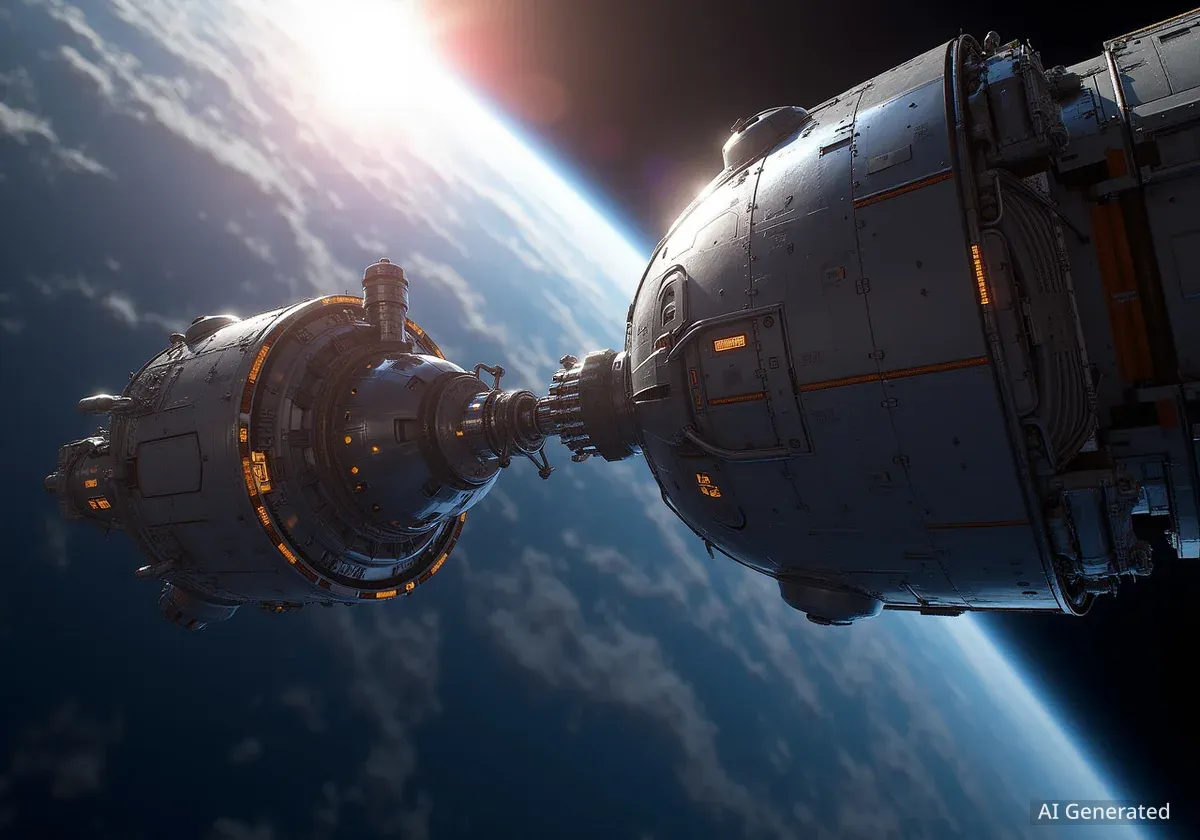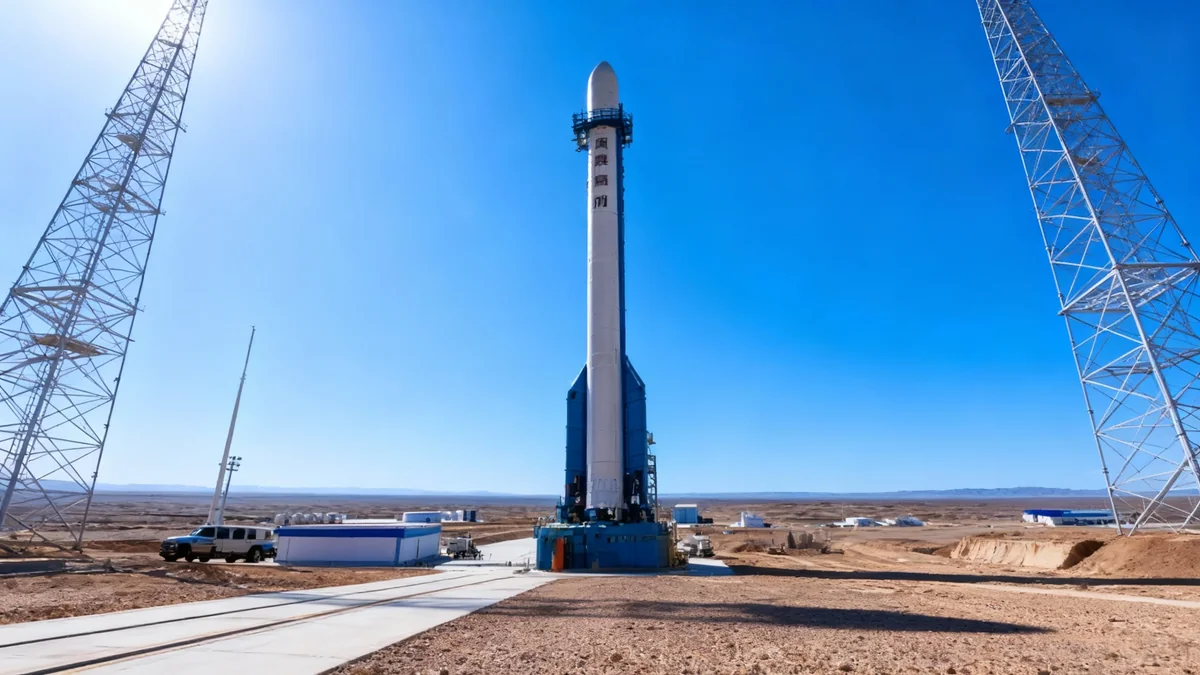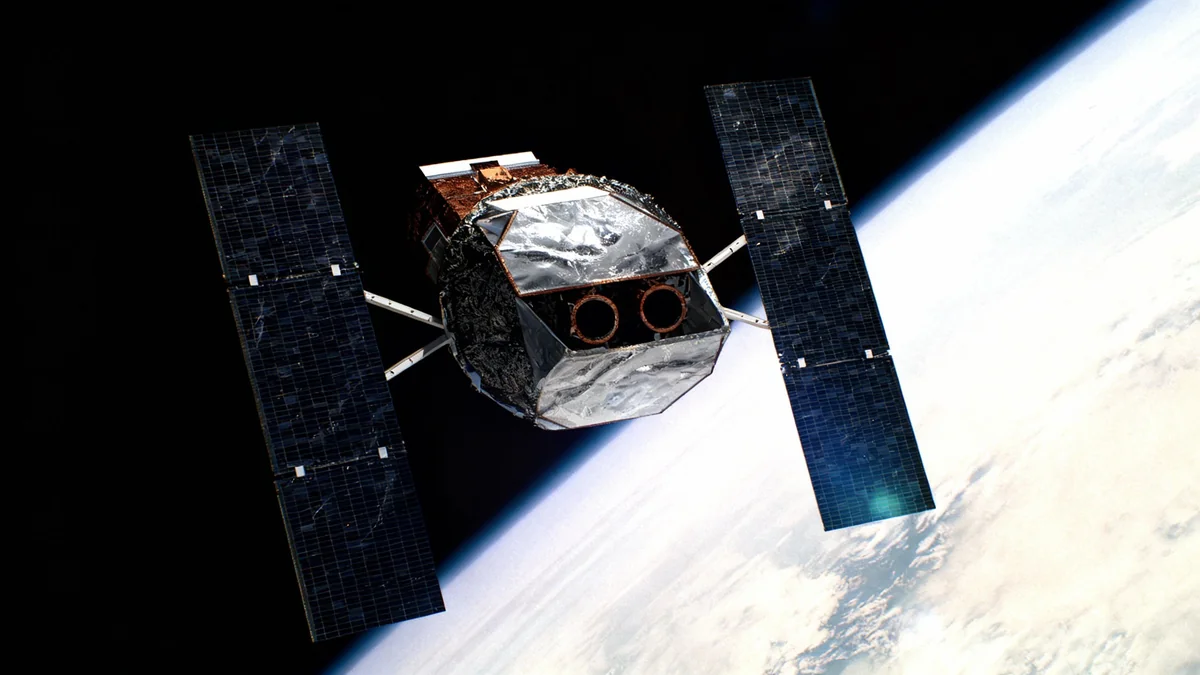Northrop Grumman has successfully completed a key ground demonstration of its Cygnus spacecraft's autonomous docking system. This test is a critical step in preparing the vehicle to service the future Starlab commercial space station, a joint venture with Voyager Space.
The demonstration, conducted at Northrop Grumman's facility in Dulles, Virginia, confirmed the Cygnus's ability to perform rendezvous, proximity operations, and docking procedures with a Starlab interface. This capability is foundational to establishing a reliable cargo supply chain for future private space stations in low-Earth orbit (LEO).
Key Takeaways
- Northrop Grumman successfully tested the autonomous docking system for its Cygnus spacecraft.
- The test simulated an approach and docking with the future Starlab commercial space station.
- This development adapts the flight-proven Cygnus for commercial cargo missions in low-Earth orbit.
- The initiative is part of a 2023 agreement with Starlab Space and Voyager Technologies to support the commercial space economy.
Successful Autonomous Docking Test
Northrop Grumman announced the completion of a full-scale rendezvous and docking demonstration on September 28, 2025. The test took place in the company's advanced Rendezvous, Proximity Operations and Docking (RPOD) Lab.
Engineers simulated the entire sequence of a space mission, where the Cygnus docking interface autonomously approached and connected with a replica of the Starlab station's docking port. This process, known as RPOD, is essential for ensuring spacecraft can safely and precisely connect in orbit without direct human piloting from within the vehicle.
The successful trial marks a significant technical milestone. It validates the hardware and software modifications made to the Cygnus, paving the way for its new role in the commercial space sector.
What is RPOD?
Rendezvous, Proximity Operations, and Docking (RPOD) refers to the complex set of procedures a spacecraft uses to meet another object in orbit. It involves navigating to the correct location (rendezvous), maneuvering carefully nearby (proximity operations), and physically connecting (docking). Automating this process reduces reliance on ground control and astronaut intervention, increasing mission efficiency and safety.
Evolving the Cygnus Spacecraft
The Cygnus spacecraft is a veteran of space logistics. For over a decade, it has been a reliable workhorse for NASA, delivering supplies, equipment, and scientific experiments to the International Space Station (ISS).
This new initiative represents a strategic evolution for the vehicle. Under an agreement established in 2023, Northrop Grumman is adapting the Cygnus platform to meet the needs of a new generation of commercial space stations. This involves upgrading its systems for fully autonomous operations with different docking mechanisms than those used on the ISS.
A Legacy of Reliability
Since its first mission in 2013, the Northrop Grumman Cygnus spacecraft has successfully completed over 20 cargo delivery missions to the International Space Station, transporting more than 60,000 kilograms (over 132,000 pounds) of essential supplies and scientific hardware for NASA and its international partners.
By leveraging the Cygnus's flight-proven design, Northrop Grumman aims to provide a dependable and cost-effective cargo service for emerging commercial destinations like Starlab. This move positions the company as a key logistics provider in the burgeoning LEO economy.
Supporting the Starlab Commercial Venture
The successful test directly supports the development of Starlab, a commercial space station being developed by Starlab Space, a joint venture between Voyager Space and Airbus. Starlab is designed to be a continuously crewed platform for conducting research and manufacturing in space.
A reliable logistics network is crucial for the viability of any space station. The ability of the Cygnus to autonomously dock and deliver cargo will be fundamental to Starlab's operations, enabling the transport of everything from scientific payloads and crew supplies to new hardware.
"This successful demonstration is a pivotal moment in our partnership with Starlab and Voyager Space. It confirms that the Cygnus platform is ready to evolve and serve the future of commercial space exploration, ensuring our partners have the reliable logistics they need to succeed in low-Earth orbit."
This collaboration is a prime example of how established aerospace companies are partnering with newer ventures to build the infrastructure needed for a sustainable human presence in space beyond the ISS.
Pioneering the Low-Earth Orbit Economy
The development of commercial space stations is a central element of NASA's strategy to transition activities in low-Earth orbit to the private sector. With the ISS expected to be retired around 2030, commercial platforms like Starlab will provide a destination for astronauts, scientists, and private companies.
This transition is expected to create a robust LEO economy, opening up new opportunities for:
- Scientific Research: Pharmaceutical development, materials science, and biotechnology in a microgravity environment.
- In-Space Manufacturing: Production of high-value materials like fiber optics or 3D-printed biological tissues.
- Space Tourism: Providing destinations for private astronauts and space tourists.
Northrop Grumman's adaptation of the Cygnus is a critical piece of this economic puzzle. By providing a proven cargo delivery system, the company is helping to lower the barriers to entry for commercial space station operators, thereby accelerating the growth of this new frontier for business and exploration.





